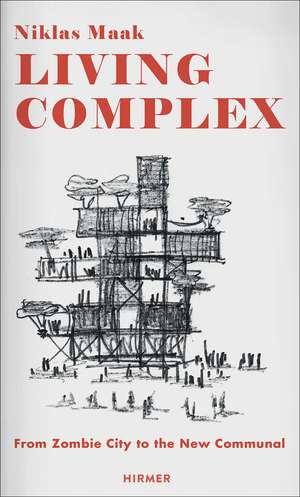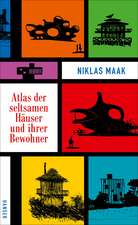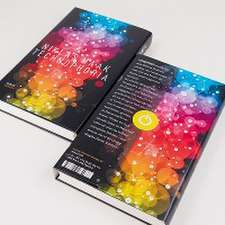Living Complex: From Zombie City to the New Communal
Autor Niklas Maaken Limba Engleză Hardback – 15 noi 2015
Cities today have become portfolios of investment properties with token patches of green. The cost to live in a fortress-like luxury housing complex in London or Manhattan is so high that most of us can’t afford it. As the masses move to the suburbs, the construction industry responds by churning out clusters of the same barracks-style row houses, ensuring that, there too, one can live in utmost privacy and security. But what do these buildings say about us? Do they have anything to do with the way in which most people actually want to live?
Niklas Maak provocatively argues that the construction industry and a number of outdated or poorly thought-out policies have prevented us from rethinking how we live in the city. Yet many of our current crises—from the mortgage crisis to global warming—are closely connected to problematic forms of accommodation in our cities. And the problem will only get worse: Over the next twenty years, influx into the world’s cities is expected to create the need for an additional one billion units of housing. Fortunately, Maak shows, there are practicable solutions. In Europe, Japan, and the United States, the author explores promising new forms of housing.
Cities should be reflections of their inhabitants—not forces to be contended with. Controversial, yet well-researched and wryly funny, Living Complex is a call for change from the “comfortable defense lines” that epitomize the current sorry state of housing.
Niklas Maak provocatively argues that the construction industry and a number of outdated or poorly thought-out policies have prevented us from rethinking how we live in the city. Yet many of our current crises—from the mortgage crisis to global warming—are closely connected to problematic forms of accommodation in our cities. And the problem will only get worse: Over the next twenty years, influx into the world’s cities is expected to create the need for an additional one billion units of housing. Fortunately, Maak shows, there are practicable solutions. In Europe, Japan, and the United States, the author explores promising new forms of housing.
Cities should be reflections of their inhabitants—not forces to be contended with. Controversial, yet well-researched and wryly funny, Living Complex is a call for change from the “comfortable defense lines” that epitomize the current sorry state of housing.
Preț: 123.95 lei
Nou
Puncte Express: 186
Preț estimativ în valută:
23.72€ • 25.36$ • 19.78£
23.72€ • 25.36$ • 19.78£
Carte disponibilă
Livrare economică 28 martie-11 aprilie
Livrare express 13-19 martie pentru 23.99 lei
Preluare comenzi: 021 569.72.76
Specificații
ISBN-13: 9783777424101
ISBN-10: 3777424102
Pagini: 240
Ilustrații: 40 halftones
Dimensiuni: 144 x 205 x 25 mm
Greutate: 0.34 kg
Editura: Hirmer Publishers
Colecția Hirmer Publishers
ISBN-10: 3777424102
Pagini: 240
Ilustrații: 40 halftones
Dimensiuni: 144 x 205 x 25 mm
Greutate: 0.34 kg
Editura: Hirmer Publishers
Colecția Hirmer Publishers
Notă biografică
Niklas Maak is a writer and arts editor at the FrankfurterAllgemeine Zeitung, and a John T. Dunlop Lecturer of Housing and Urbanization at Harvard. He is the author of Le Corbusier: The Architect on the Beach, also published by Hirmer Publishers.
Cuprins
Problems of Contemporary Architecture
Holding on to the idyll
Housing as fetish
Empty shells for lifestyles that no longer exist
The problem of structure and form. The cult of downsizing
A billion housing units
The two crises of housing
Super objects
How to argue about architecture?
The anthropologization of habitation
Revolt against the building mafia
Radicalized spatial qualities
Building law as a problem
The language crisis of architecture
After the house
Agoraphobia: the flip side of compaction pressure
Architects to the barricade: self-empowerment
1. City and Suburb
The Zombified City
Suburbia
Worlds without an outside
2. Being at Home, A Brief Phenomenolgy of Habitation
Elemnts of architecture
Thinking of life from the perspective of death
The rooms of the house
3. Different Houses
Architecture and language
Building beyond categories
Inclusiveness: the maze replaces the wall
A theory of the threshold
4. A Short History of the Single-Family Home
How Neanderthal man goes into the single-family home
Men hunt, women do the housework
"Cottage Economy" and the consequences
Collective living or individual home?
Economic reasons for the triumph of the single-family home
Explosives against the collective
5. After the House, beyond the Nuclear Family
What comes after the single-family home?
Manifestos for post-familial housing
Sharing
Collective housing: what went wrong
The new housing collectives
6. Transformations of Privacy
Openness and intimacy
Early history of private housing
Utopian dreams of utter publicness
Robbery and property
Achitecture of hospitality
7. Shared Spaces
A square that is a forest
New spaces: strategies of creating form
8. Closed and Open Systems
Architecture as sculpture
The city as image: Celebration
A theory of nidation
Remaining on site: a new role for the architect
The Colony: models for new communal spaces
9. Atmospheres
Housing and what unconsciously affects it
Paradox atmospheres
The control of perception in commercial space
10. Change the Laws!
Housing, bureacracy, capitalism
Legislation as a design device
Money for communities
Changing building regulations
Joint building ventures and adaptive reuse
Conversions
The Room of Janus
Notes
Picture Credits
Holding on to the idyll
Housing as fetish
Empty shells for lifestyles that no longer exist
The problem of structure and form. The cult of downsizing
A billion housing units
The two crises of housing
Super objects
How to argue about architecture?
The anthropologization of habitation
Revolt against the building mafia
Radicalized spatial qualities
Building law as a problem
The language crisis of architecture
After the house
Agoraphobia: the flip side of compaction pressure
Architects to the barricade: self-empowerment
1. City and Suburb
The Zombified City
Suburbia
Worlds without an outside
2. Being at Home, A Brief Phenomenolgy of Habitation
Elemnts of architecture
Thinking of life from the perspective of death
The rooms of the house
3. Different Houses
Architecture and language
Building beyond categories
Inclusiveness: the maze replaces the wall
A theory of the threshold
4. A Short History of the Single-Family Home
How Neanderthal man goes into the single-family home
Men hunt, women do the housework
"Cottage Economy" and the consequences
Collective living or individual home?
Economic reasons for the triumph of the single-family home
Explosives against the collective
5. After the House, beyond the Nuclear Family
What comes after the single-family home?
Manifestos for post-familial housing
Sharing
Collective housing: what went wrong
The new housing collectives
6. Transformations of Privacy
Openness and intimacy
Early history of private housing
Utopian dreams of utter publicness
Robbery and property
Achitecture of hospitality
7. Shared Spaces
A square that is a forest
New spaces: strategies of creating form
8. Closed and Open Systems
Architecture as sculpture
The city as image: Celebration
A theory of nidation
Remaining on site: a new role for the architect
The Colony: models for new communal spaces
9. Atmospheres
Housing and what unconsciously affects it
Paradox atmospheres
The control of perception in commercial space
10. Change the Laws!
Housing, bureacracy, capitalism
Legislation as a design device
Money for communities
Changing building regulations
Joint building ventures and adaptive reuse
Conversions
The Room of Janus
Notes
Picture Credits
Recenzii
“This informative little book addresses the myriad elements that make up the human habitat today. Through vignettes drawn from architecture and cities worldwide, the author begins by citing the zombie problems within the present urban landscapes, largely predicated on the profits that can be made. . . . Living Complex is peppered with superb black-and-white photographs, making for a delightful read. It makes an impactful statement about how cities do not work, how they became this way, and what can be done to reclaim what has been lost. . . . Highly recommended.”








